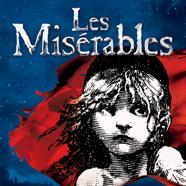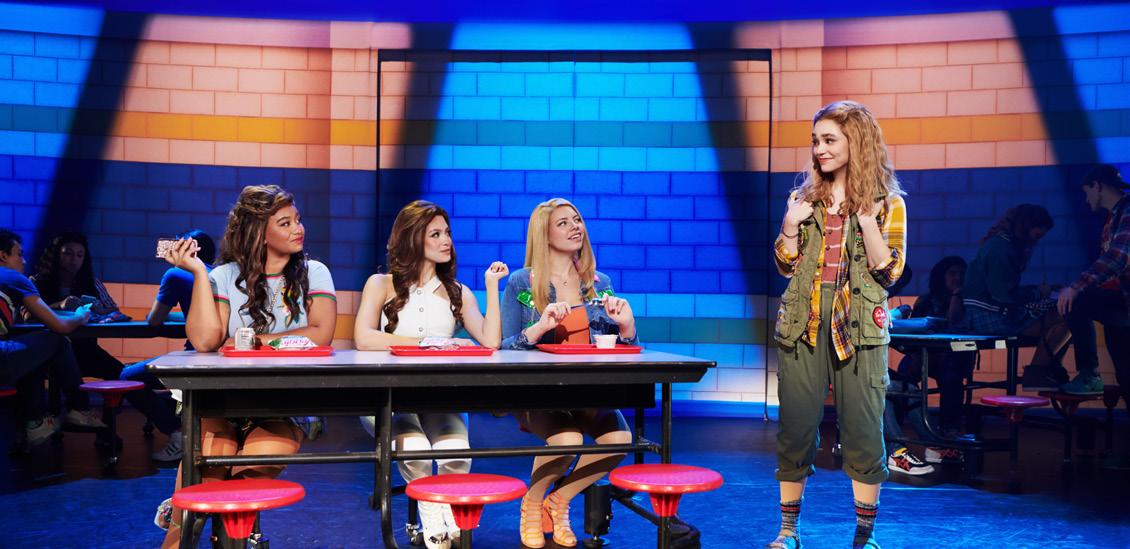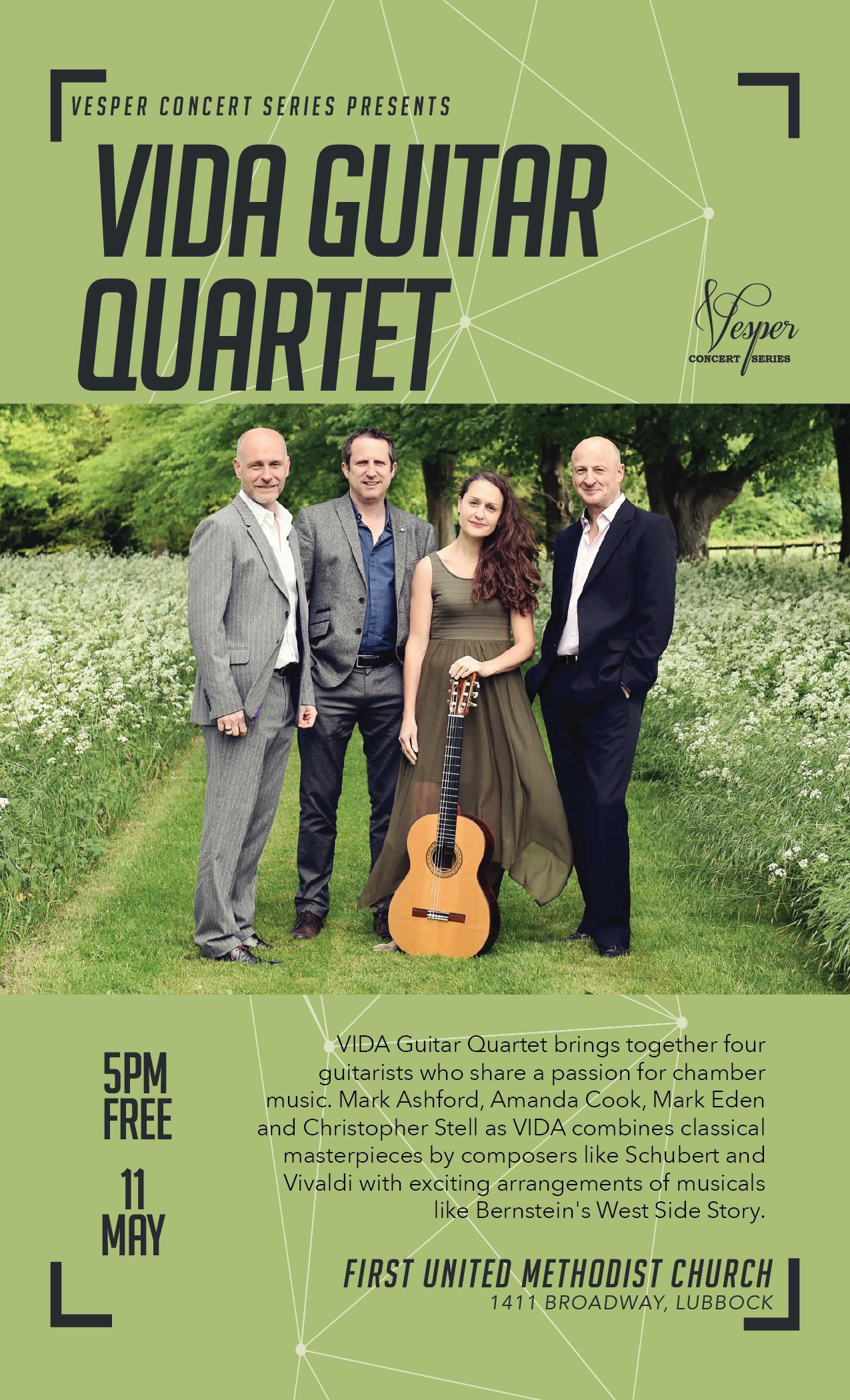














SATURDAY APRIL 5 2025 | 7:30 PM SATURDAY APRIL 5 2025 | 7:30 PM

SCHULHOFF Symphony No. 2 ORFF Carmina Burana
Amanda Key, soprano
Martin Bakari, tenor
Mark Billy, baritone
The Lubbock Chorale
The West Texas Children’s Chorus
David Cho, conductor


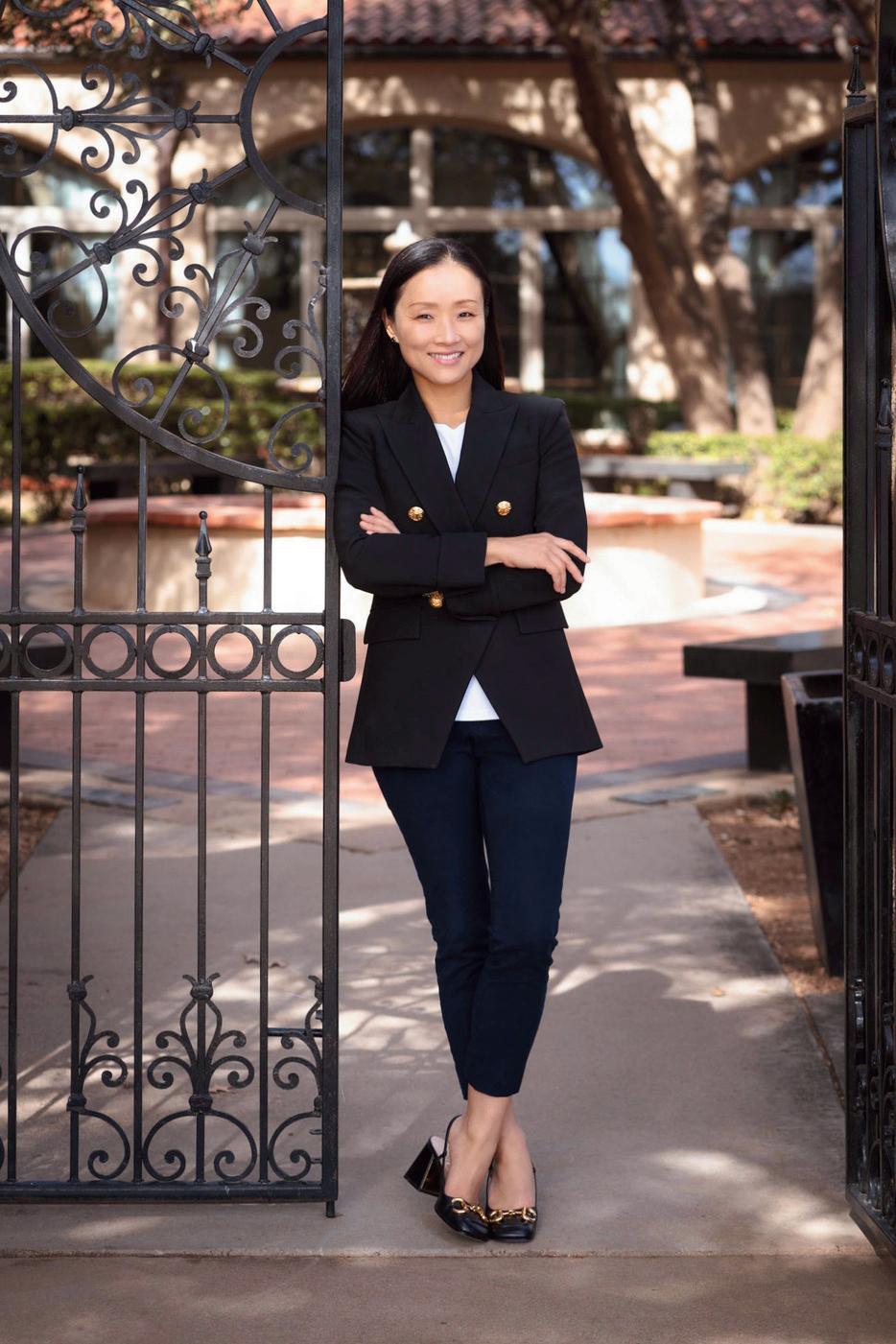









Dear Symphony Friends,
Welcome to our final Masterworks performance of the 202425 season. We are delighted that The Lubbock Chorale and The West Texas Children’s Chorus will be joining your Lubbock Symphony on stage this evening.
Tonight’s production features Carl Orff’s 1936 opus Carmina Burana. Based on twenty-four poems from the medieval collection by the same name, it premiered at the Frankfurt Opera on June 8, 1937. After Beethoven’s Ninth Symphony, few choral works have entered the pop culture awareness more than the Carmina Burana.
It has been said that Erwin Schulhoff wrote music like birds sing. His fourmovement, eighteen-minute piece, Symphony No. 2, found inspiration in the rhythms of jazz music. Mr. Schulhoff was one of the European musicians whose successful careers were prematurely ended by the rise of the Nazi regime in Germany.
I want to express my appreciation to our sponsor United Supermarkets The United Family has been a generous supporter for many years, and we are indebted to them for their continued funding. In addition to our sponsors, this year’s presentations were made possible by the musical virtuosity of Maestro David Cho and our extraordinary Lubbock Symphony Orchestra. We would also like to express our gratitude to our President and CEO Galen Wixson and our dedicated staff.
On June 7, please join us as the Lubbock Symphony celebrates the music of ABBA at “The Concert: A Tribute to ABBA”. The Concert continues to be the top ABBA tribute group in the world. They will entertain us with their impressive performance while playing the most iconic hits from ABBA.
Finally, I thank you, our patrons, for your attendance and continuing interest in and support of the Lubbock Symphony Orchestra.
Best wishes,

Toni Wallingford Chair LSO Board of Directors



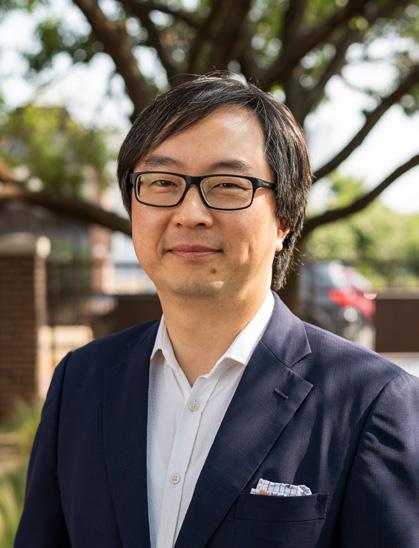
Dear Friends of the Lubbock Symphony,
Welcome to Lubbock Symphony’s final Masterworks of the season!
We are thrilled to bookend our series with one of the most renowned choral works; Carmina Burana. In addition to our incredible talents of The Lubbock Chorale and The West Texas Children’s Chorus, we welcome back soprano Amanda Key and the Lubbock Symphony debuts of tenor Martin Bakari and baritone Mark Billy.
Our immense thanks to Jerry Serrano and Alma Quartet for performing jazz in our Spotlight Sessions Pre-concert Performance. Jazz is a wonderful tie into Erwin Schulhoff’s Symphony No. 2. This work renders how the composer viewed the jazz idiom. Around the same time Schulhoff composed this symphony, Carl Orff penned what would become a one-hit wonder Classical rock sensation; Carmina Burana.
We are most grateful to all of you who committed to this evening’s performance. The live concert experience is a two way street and your presence will inspire our musicians and singers to create a memorable performance. Special thank you to our friends at United Supermarkets, Classical 105.7, and Hamil Brothers who sponsored this evening. There are so many community partners who make these performances possible: we denote your special contribution through our ads in this program book.
In addition to our June performance of The Concert: A Tribute to ABBA, we have rolled out our 2025-26 season and its subscription is available for purchase. We hope you will continue on this musical journey with us.
Most sincerely,
David Cho Music Director Lubbock Symphony




You love Bach in black tie, but have you tried Sibelus in slippers? Beethoven à la bubble bath? Dvořák with your favorite doggo?
Locally-curated classical content is now available via voice command— wherever you are. Just tell your smart device to play KTTZ-HD2, and start that soaker!

1946-1987 IN HONOR OF
Founding Conductor of the Lubbock Symphony Orchestra


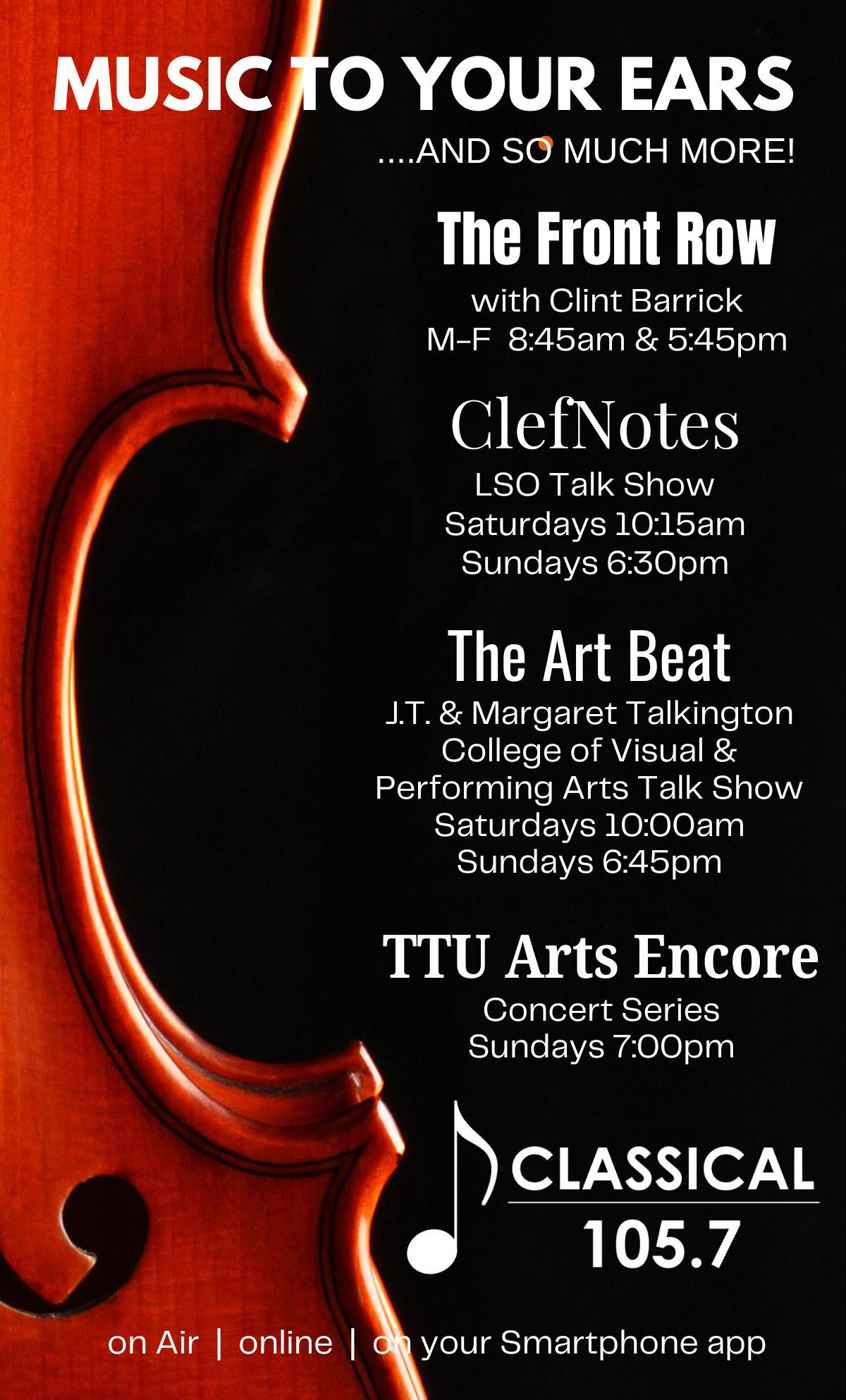



Amanda Key is known for her “wonderful light lyric voice with a smashing top.” The American Soprano graduated from Texas Tech University with a Bachelor’s degree in Vocal Performance and after she finished her Master’s degree at the Conservatory in Amsterdam, she co-founded and was named artistic director of a Dutch opera company called B.O.O.M! Bold Opera on the Move.
She was blessed to sing in 11 different countries while living and working in Europe for 12 years. Amanda has performed various opera roles in productions such as Le Nozze di Figaro (Susanna) in Greece and the Netherlands, Vivaldi’s Ottone in Villa-Macht Oder Liebe (Tullia) with Oper Oder Spree in Germany, Cosí fan tutte (Despina) in Italy, Rigoletto (Gilda) in the Netherlands, Un Ballo in Maschera (Oscar) in Spain, Die Zauberflöte (Königin der Nacht and Erste Dame) in the Netherlands, Die Verkaufte Braut (Esmerelda and Kathinka) in the Netherlands, Dialogues of the Carmelites with Austin Lyric Opera, and L’Elisir D’Amore with the Dutch National Opera Academy.
She also participated in many international masterclasses such as the International Opera Academy in Schwerte, Germany under the direction of Yamina Maamar and Norbert Schmittberg, performing Zerbinetta’s aria in Strauss’s Ariadne auf Naxos, the International Masterclass Circolo della Lirica di Padova, performing scenes from Rossini’s Il turco in Italia (Fiorilla) in Italy with director Stefano Vizioli, and performing Die Fledermaus (Ida) at the International Vocal Arts Institute in Tel Aviv, Israel directed under Joan Dornemann of the New York Metropolitan Opera’s young artist program. She also attended the European Music Academy in Prague, Czech Republic under the direction of Maestro Wolfgang Scheidt and was a finalist in the 2016 Beethoven Award performing highlights from Mozart’s Le Nozze di Figaro (Susanna and Barbarina) and Cosi fan tutte (Despina) with the North Czech Philharmonic at the world-famous Smetana Hall, Prague Municipal House.
Amanda also performed oratorio and church music as a soloist in more than 200 cathedrals throughout the Netherlands and Belgium, including repertoire from The Messiah by George Frideric Handel, Matthäus Passion and Johannes Passion by Johann Sebastian Bach, Sacred Songs by Karl Jenkins, Die sieben Worte unseres Erlösers am Kreuz by Joseph Haydn, Requiem by John Rutter, Symphony No. 3 in D minor by Anton Bruckner, Ein deutsches Requiem by Johannes Brahms, and the Requiem by Wolfgang Amadeus Mozart with the Arnhems Oratorium Koor, Dordrecht Opera Koor, Belgian Vox Amicorum, Volendams Opera Koor, Groot Omroepkoor, and as a guest artist of the Lubbock Symphony Orchestra.



Praised by Opera News as a “vocally charismatic” performer with a “golden tenor,” Martin Bakari’s recent engagements include the title role in Charlie Parker’s Yardbird (Atlanta Opera, Arizona Opera, Pittsburgh Opera, Dayton Opera, New Orleans Opera, Indianapolis Opera), the tenor soloist in Carmina Burana (Cecilia Chorus of NY - Carnegie Hall, Symphony San Jose), Kodály’s Psalmus Hungaricus (Grant Park Music Festival), Messiah and the premiere of Paul Moravec’s A Nation of Others (Oratorio Society of NY - Carnegie Hall), Frederic in The Pirates of Penzance (Virginia Opera, Kentucky Opera), Goro in Madama Butterfly (Dallas Opera, Opera Philadelphia), Mime in Das Rheingold (Seattle Opera), Dr. Caius in Falstaff and Wilson (cover) in the premiere of Jake Heggie’s Intelligence (Houston Grand Opera), Pong in Turandot (Opera Colorado), Don Basilio in Le nozze di Figaro (Seattle Opera, Seiji Ozawa Matsumoto Festival), Tybalt in Roméo et Juliette (Vashon Opera), The Cartography Project (Washington National Opera, The Kennedy Center), and a United Kingdom recital tour (Mirror Visions Ensemble).
Internationally, he has also appeared at major venues in Munich, Hamburg, Dresden, Frankfurt, Cologne, Tel Aviv, and Bari. Mr. Bakari’s 2024-25 season includes Count Almaviva in Il barbiere di Siviglia (Indianapolis Opera), Greene Evans in the premiere of Jubilee (Seattle Opera), Goro in Madama Butterfly (Utah Opera), Gastone in La traviata (Seiji Ozawa Music Festival - Japan), Michael in the premiere of Steele Roots (Atlanta Opera), Bootleg Joe in a workshop of The Factotum (Portland Opera), Messiah (Boise Philharmonic, Calvin Oratorio Society), and Carmina Burana (Lubbock Symphony Orchestra).
Future seasons include his debut performances and recording with the Barcelona Symphony Orchestra, his debut with Nashville Opera, and his returns to Opera Colorado, Dayton Opera, and the Boise Philharmonic. A 2018 George London Competition award winner, Mr. Bakari’s recording of Grigory Smirnov’s Dowson Songs (Naxos) was featured by Opera News as a “Critic’s Choice” album.
www.martinbakari.com


Mark Webster Orin Billy is a Verdi baritone, clarinetist, and Native flutist of Indigenous (Choctaw tribe) ancestry from Finley, Oklahoma. Mark has been hailed as the leading Indigenous baritone of his generation. He enjoys a multi-faceted career in opera, recitals with piano, concerts with orchestra, and Indigenous classical music education. Mark has been named a recipient of the 2025 Native American Performing Arts Fellowship by the First People’s Fund. Mark is an artist on the artistic roster of the North American Indigenous Songbook, under the direction of Timothy Long. NAIS is an initiative to commission Indigenous composers to create new vocal works to be added to the standard art song repertoire. Mark recently created the lead baritone role of Inki’ in Chickasaw composer Jerod Impichchaachaaha’ Tate’s opera Loksi’ Shaali’ (Shell Shaker) the first opera in history to be completely sung in an Indigenous language- Chickasaw. Mark has recently been engaged by the Bach Society of Minnesota, Rochester Symphony, Oklahoma City Philharmonic, Mixed Precipitation, Duluth-Superior Symphony, Mesabi Symphony, Opera Montana, Madison Opera, Hawaii Opera Theater, Minnesota Orchestra. In 2026 Mark will make his debut with the St. Paul Chamber Orchestra premiering three new works in a concert he curated.
Please follow Mark on Instagram @markwobilly and his personal website for upcoming performances: markbillybaritone.com
Mark is based in Uptown, Minneapolis.

Alan Zabriskie is Director of Choral Studies and Associate Professor of Music at Texas Tech University where he serves as conductor of the University Choir and mentors doctoral and masters students in choral conducting and teaches undergraduate choral conducting. He also serves as Artistic Director of the Lubbock Chorale. Prior to arriving at Texas Tech University, he served as Director of Choral Activities at the University of Central Missouri for seven years and taught middle school and high school choral music in the Clark County School District in Las Vegas, Nevada. Alan holds degrees from Florida State University, Brigham Young University, and the University of Utah.
Under Alan’s direction, notable choral performances include a National Convention of the American Choral Directors Association, the Texas Music Educators Association Convention, the Missouri Music Educators Association In-service Workshop/Conference, and various concerts at Carnegie Hall in New York City. He has conducted performance tours and honor choirs and served as clinician in choral festivals and conferences throughout the United States, Europe, Africa, and Asia, including his most recent tour with the University Choir to the countries of Estonia, Latvia, and Lithuania.
Alan Zabriskie Conductor
Kerra Simmons Associate Graduate Conductor
Charles Whitehead Collaborative Pianist
Anh Van Collins Business Manager
SOPRANO
Betsy Bass
Lillian Brecheisen
Elizabeth Campbell
Sarah Cantor
Rose Carilli
Addy Davis
Oxana Davis
Miranda Dawson
Susan Draper
Kristi Edwards
Chloe Ellis
Jennifer Furey
Soprano, continued
Hannah Gossett
Madison Hanson
Janie Harms
Emma Harvey
Karen Hybner
Jazzmin Kasper
Chris Kimbler
Jordan King
Karina Lago Disdier
Erin Miller
Katie Nielsen
Mimi Pappas
Kensly Peck
Rebecca Puckett
Claire Randolph
Julie Ray
Glenda Reynolds
Christina Rielo
Kerra Simmons
Lindsey Sumner
Kamry Zander
Keeli Ackerman
Sofia Altamirano
Ashton Aranda
Gwendolyn Bain
Nancy Beckerink
Natalie Castro
Jo Crum
Robbi Crumpler
Kylie Davis
Carolyn Eaks
Amberlynn Gonzales
Haley Guenther
Melinda Hatfield
Aveline Hewetson
Dana Hinds
Patsy Jackson
Judith Johnson
Faith LaLande
Marissa Loera
Sarah Maher
Bridget Mann
Katie Mann
Nicole Martens
Peyton Matthews
Rachael McCutcheon
Natalie Odom
Erin Pearce
Samantha Pearce
Kelsey Peck
Celestina Perez
Moe Shiraishi
Susan Smith
London Spencer
Connie Spicer
Lori Summers
Olivia Tolosa
Linda Tyler
Juliana Upchurch
Kate Vasquez
Cynthia West-Ward
Rashell Wilhoit
Saundra Wimberley
Karen Wood
Lindsey Woodward
Jana Zacharias
Michael Barlow
Darrell Bateman
Jacob Briggs
Simon Carter
Aidan Chapleau
Charlie Correa
Gershom Garcia
Randall Hinds
Mark Huffines
Jeff Hunt
Joey Kasper
Weston Marshall
Colton Murphy
Samuel Orta
Robert Posey
Rolla Randel
Dan Smith
Ken Smith
Paul Smith
Mark Bailey
Dave Bender
Andrew Bevly
Trayce Boudreaux
Brian Cole
Jack Cozad
Alex Davila
Ryan J Donet
Terry Forbes
Austin Garcia
James Gauna
Jake Hemmle
Naehyeog Kang
Steve Lanham
Mark Light
Leonardo Lopez
Christopher Markgraf
Mike McCasland
Collin Smith
Skipper Wood
Kerry Wright
This list represents all currently active members. Some members may not participate in every concert.




Dr. Susan Brumfield is Professor of Music Education at Texas Tech University, and Artistic Director of The West Texas Children’s Chorus. She holds a Ph.D. in Music Education from the University of Oklahoma. Dr. Brumfield is known for her work as a teacher, author, composer and conductor. An internationally recognized expert in the Kodály approach, Susan Brumfield is the author of First, We Sing! Kodály-Inspired Teaching in the Music Classroom, a series of textbooks and song anthologies published by Hal Leonard Music. Dr. Brumfield has been honored twice as the Texas Tech University College of Visual and Performing Arts Award for Outstanding Research, and as a two-time finalist for the President’s Book Award. She was the 2019 recipient of the university-wide Barnie E. Rushing Jr. Award for Research at Texas Tech University.
In frequent demand as a commissioned composer, clinician and guest conductor, Dr. Brumfield has conducted numerous national, regional and all-state choirs, including the OAKE National Children’s Chorus and the ACDA Eastern Division Children’s Honor Choir. She serves on the artistic staff of the Pacific International Choral Festival as conductor of Treble Choral Festival Choirs.
Susan Brumfield, Artistic Director
Kimberley Carter, Mandy Algate, Kendall Mencio, Elisa Wiseman, Conductors
Beckham Bolin
Linden Bolin
Kaja Castillo
Edith Christopher
Eliza Cole-Smith
Ryle Cole-Smith
Samantha Cunningham
Elena Crump
Penelope Elizardo
Paulina Estrada
Ella Garcia
Ian Lee
Ralph Lemon
Bryn Limon
Aspen Mitchell
Luke Moya
Josselyn Palacios
Olivia Rodrigues
Cooper Seymour
Milo Taylor
Bo Wall
Gabby Wallace
Willow Wolf
Aubrey Wilhold
Madeline Worley
Kimber Womack





December 14, 1934 - February 2, 2025





Section and Principal Flute Lubbock Symphony Orchestra (1968-2005) In Margaret Redcay
April 21, 1935 – January 24, 2025
David Cho
The CH Foundation Endowed Conductor’s Podium
Annie Chalex Boyle
Concertmaster
Jones-Saathoff Family
Endowed Chair
Linda Lin
Associate Concertmaster
Diekemper Family Foundation
Endowed Chair
Maja Maklakiewicz
Assistant Concertmaster
Abi Rhoades
Lazaro Gonzalez
Grace Marín Aguilar
Adan Flores
Shawn Earthman
TTU School of Music
Endowed Performer Chair
Radman Rasti
Kea Beasley
Evgeny Zvonnikov Principal
Justice Phil and Carla Johnson
Endowed Chair
Saikat Karmakar
Assistant Principal
Cassidy Forehand
Carroll Jane Goodyear
James Ellis
Shirley Wigley
Brennan Lowrey
Martha Perez
Anna Kim
Sean Kyhm
Gwendolyn Matias-Ryan
Principal
Mary M. Epps and Ralph E.
Wallingford Endowed Chair
Marian Herrero
Israel Mello
Sharon Mirll
Ryellen Joaquim
Sera Jung
Bruno Silva
Michael Newton Principal
Mary Francis Carter Endowed Chair
Danny Mar
Madeline Garcia
Daria Mi´skiewicz
Justin Barnwell
Mark Morton Principal
Eugene and Covar Dabezies
Endowed Chair
Hannah Macgillivray
Stuart Anderson
Christopher Arcy
Gregory Faught
Nodier Garcia
Kim Hudson Principal
Crew of Columbia, STS-107
Endowed Chair
Eric Leise
Spencer Hartman
Eric Leise
Spencer Hartman
Kathleen Bell Principal
Lubbock Symphony Guild
Endowed Chair
Jordan Hastings
Susetta Rockett
Susetta Rockett
Janeen Drew Holmes Endowed Chair
David Shea Principal
Christine Polvado and John
Stockdale Endowed Chair
Ryan Rodarte
Hamed Shadad
Ryan Rodarte
Hamed Shadad
SAXOPHONE
David Dees
BASSOON
Vince Ocampo
Principal
Nancy and Tom Neal
Endowed Chair
Ian Resurreccion
Jacob Prentice
Quentin Fisher
Principal
Anthony and Helen Brittin
Endowed Chair
Esteban Chavez
Clark Hutchinson
Jack Mellinger
Seth Wallace
TRUMPET
Gary Hudson
Principal
Stacey and Robert Kollman
Family Endowed Chair
Joe Vandiver
William Takacs
CORNET
Joe Vandiver
William Takacs
TROMBONE
James T Decker
Principal
Larry and Lucy Landusky
Endowed Chair
Bruce Keeling
Darin Cash
Tim and Mary Jane Sampson
Endowed Chair
Arturo Galvan
Principal
Diekemper Family Foundation
Endowed Chair
Lisa Rogers
Principal
Lubbock Symphony Guild
Endowed Chair
Christopher Mehrafshan
Christopher Mehrafshan
Principal
Lisa Rogers/Alan Shinn Principal
Percussion Endowed Chair
Erin Martysz
Javi Garza
Jacob Cauley
Anthony Flores
Ryan Pound
Richard Fountain
Principal
Edward R. and Jo Anne M. Smith
Principal Piano Endowed Chair
Helen Kim-Sills
CELESTA
Richard Fountain
BANJO
Brent Wheeler
PERSONNEL MANAGER
Gary Hudson
LIBRARIAN
Israel Mello



A Symphony inspires, educates & captivates us all.



PROUD SUPPORTER OF



III. Allegro assai: “Scherzo alla jazz”
IV. Allegro con spirito: “Finale”
Carl Orff (1895-1982)
Carmina Burana
FORTUNA IMPERATRIX MUNDI
(Fortune, Empress of the World)
O FortunaFortune plango vulnera
I. PRIMO VERE (In Springtime)
Veris leta facies -
Omnia Sol temperat -
Ecce gratum
UF DEM ANGER (On the Green)
Tanz -
Floret silvaChramer, gip die varwe mirReieWere diu werlt alle min
SCAN TO VIEW TEXT TRANSLATIONS

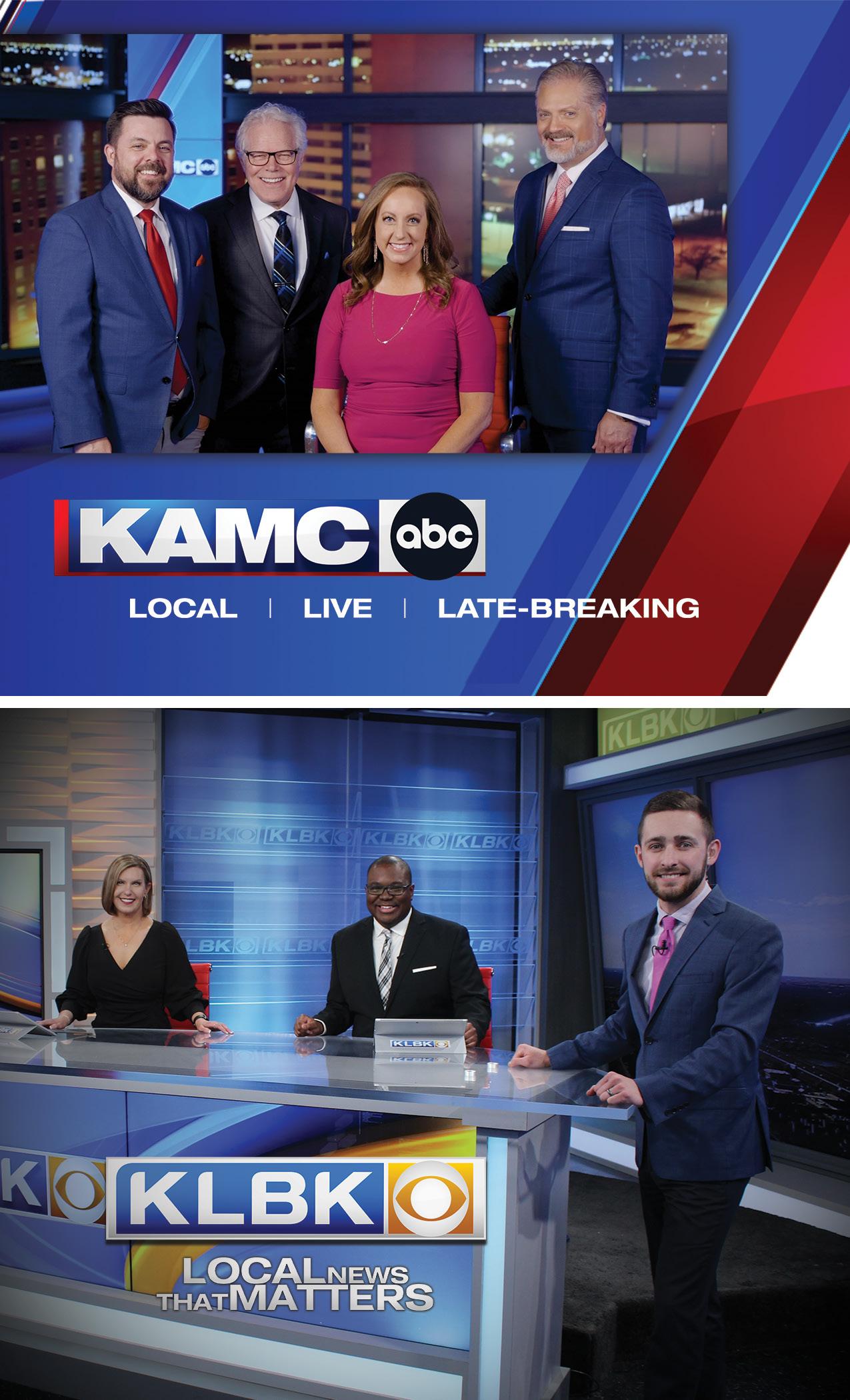
II. IN TABERNA (In the Tavern)
Estuans interius -
Olim lacus colueram -
Ego sum abbasIn taberna quando sumus
III. COUR D’AMOURS (The Court of Love)
Amor volat undique -
Dies, nox et omnia -
Stetit puella -
Circa mea pectora -
Si puer com puellula -
Veni, veni, veniasIn trutina -
Tempus est iocundum -
Dulcissime -
BLANZIFLOR ET HELENA (Blanziflor and Helena)
Ave formosissima -
FORTUNA IMPERATRIX MUNDI
(Fortune, Empress of the World)
O Fortuna





The tragedy of Erwin Schulhoff’s life has often overshadowed an appreciation of his music. His death in the Wülzburg prison in Bavaria in August of 1942 was yet another fatality of the Nazi regime’s persecution and attempted extermination of the Jewish population of Europe. Schulhoff was one of many composers whose lives were brutally cut short by the Holocaust, along with Viktor Ullman, Hans Krása, Ilse Weber, Gideon Klein, Pavel Haas and countless others. It is only in the 21st century that their music has been rediscovered, performed and recorded, giving us only the most fleeting glimpse of the immense talent that was lost in the horrors of the Nazi occupation.
Born in Prague in 1894, Schulhoff began his musical studies at the Prague Conservatory at the age of 10, receiving encouragement from no less a composer than Antonín Dvořák. He studied piano and composition there, later moving on to further studies in Vienna, Leipzig, and Cologne; where Claude Debussy and Max Reger were among his teachers. His education was cut short by service, the Austro-Hungarian army on the Russian front in the First World War, where he was wounded and captured in 1917. His first-hand experiences with the appalling cost of the war would shape his political and musical future. In a diary entry in 1916, Schulhoff wrote:
It is nothing less than a flood, a destructive force threatening to destroy the entire culture of European humanity. I can only place the years 1914, 1915, 1916 on humanity’s lowest rank; they make a mockery of the 20th century.
After the war, Schulhoff, having seen the futility and absurdity of battle, embraced the aesthetic of the Dadaist art movement, with its emphasis on incongruity, nonsequitur, and outrageous humor. One of his piano works from this period, the “In futurum” movement of his 5 Pittoresken, Op. 31 is a predecessor to John Cage’s famous/infamous 4’33” – Schulhoff’s score is composed entirely of rests. If anything, Schulhoff manages to “out-Cage” Cage; the piece is notated in frequently changing bizarre time signatures (3/5 in the right hand vs. 7/10 in the left), and the rests are needlessly written in absurdly complicated rhythmic patterns. The performer is given the tongue-in-cheek instruction to play “the whole piece with free expression and feeling, always, until the end.”
Schulhoff embraced music as a cleansing element to the horrors of the war he had just witnessed. The failure of traditional social and political systems to safeguard the lives of their citizens gradually pushed him to eventually embrace Communism, a change foreshadowed in this “manifesto” that he published to promote concerts of the avant-garde in 1919:
Absolute art is revolution, it requires additional facets for development, leads to overthrow (coups) in order to open new paths... and is the most powerful in music.... The idea of revolution in art has evolved for decades, under whatever sun the creators live, in that for them art is the commonality of man. This is particularly true in music, because this art form is the liveliest, and as a result reflects the revolution most strongly and deeply–the complete escape from imperialistic tonality and rhythm, the climb to an ecstatic change for the better.
Through the 1920s, Schulhoff absorbed other European musical trends into his style, including the Expressionist style of Schoenberg, Berg, Hindemith, and Bartók, along with the stylistic features of American jazz and ragtime. He expressed his fascination with jazz in a letter to his friend Alban Berg:
I am boundlessly fond of nightclub dancing, so much so that I have periods during which I spend whole nights dancing with one hostess or another... out of pure enjoyment of the rhythm and with my subconscious filled with sensual delight.... thereby I acquire phenomenal inspiration for my work, as my conscious mind is incredibly earthly, even animal as it were.
The remainder of the decade was one of artistic fulfillment, both as composer and pianist. He toured Europe regularly, performing a mixture of his own compositions along with American jazz and ragtime. His compositions were greeted with acclaim in both Europe and the United States, and in 1929 he was appointed to the faculty at the Prague Conservatory.
With his increasing involvement with Communism, along with his Jewish heritage, Schulhoff’s fortunes began to take a turn for the worse. With the rise of the Nazis in Germany and Austria, Schulhoff was forbidden to perform in those countries, and his music was labeled as “Entartete Musik” (Degenerate Music) and denied publication and performance. With works like his oratorio setting words from the Communist Manifesto, Schulhoff’s Marxist sympathies did not endear himself to the Czech government and he was eventually reduced to working as a staff pianist for Czech Radio to make ends meet. With the Nazi invasion of Czechoslovakia in 1939, he was forced to go into hiding, performing only under a pseudonym. He successfully applied for Soviet citizenship, but he delayed leaving Prague and was arrested the day after Germany invaded Russia, charged with being a combatant of a “foreign power.” In prison, he succumbed to tuberculosis before he could be transferred to a concentration camp.
The Second Symphony, written in 1932, heralds a style that might best be described as neo-classical, the same aesthetic impulse that influenced Stravinsky and other composers of the time. Neo-classicism combined modern harmony with musical forms and sonorities from the Baroque and Classical era, with their emphasis on clarity and simplicity. Critics of the time referred to neo-classicism in music as the “Back to Bach” movement for its similarities to the music of the eighteenth century.
The symphony’s lean instrumentation and clarity may also have roots in Schulhoff’s work in radio, which he began shortly after his return to Prague in the early 1930s. From his earliest experiences with the medium of radio, he was forced to deal with relatively low-level technology which failed to accurately reproduce the sounds of larger ensembles like symphony orchestras. Rather than using the large forces of Bruckner or Mahler, Schulhoff employs single woodwinds, two cornets, a single trumpet, and no low brass. These forces are sparingly used as a full ensemble, with chamber-music textures pervading most of the work.
As with all of Schulhoff’s music, the influences on the Second Symphony are many and varied, but the influence of Baroque and Classical music is by far the most pervasive, with the exception of the third movement, the intriguingly named Scherzo a la jazz. The first movement (Allegro ma non troppo) opens with a cheeky bassoon piping a jaunty melody over motoric rhythms in the strings. The musical material in this movement is very concise, with a small number of ideas forming the basis for the work, much in the manner of the symphonies of Joseph Haydn or the
“Classical” Symphony of Prokofiev, though the atmosphere of Bach’s Brandenburg Concertos is also prevalent. The subsequent Andante con moto weaves its bittersweet counterpoint over a gently pulsing accompaniment. The spirit of Haydn is heard here as well, along with echoes of Stravinsky (the Petrushka-like trumpet solos) and Kurt Weill’s The Threepenny Opera. The jazz-tinged third movement (Allegro assai) begins as a spooky Expressionist march before the unusual colors of saxophone and banjo morph the music into a slinky foxtrot and a somewhat sinister Charleston. The finale returns us to the exuberance of the opening movement, with the second of the movement’s ideas introduced by a quartet of solo strings. The ebullient good humor of the music recalls the finale of Beethoven’s Eighth in its exploration of small rhythmic motives that slowly build to climactic moments. This boisterous finale concludes in a flurry of manic energy, closing with the same assertive statement with which it began.
Carl Orff: Carmina Burana
The most visible artifacts from the European civilization of the Middle-Ages are sacred in nature. After the sack of Rome by the Germanic king Odoacer in 476, much of the knowledge of the ancient world was preserved either behind the stout walls of the monasteries that St. Columba and other Celtic monks founded throughout Europe, or in the libraries of the Eastern Roman Empire and its capital, Constantinople. As social and political order re-established itself in Europe, the great cathedrals of Chartres, York, Cologne and other great cities climbed skywards as the symbols of the Church’s power in medieval society. Monastic copyists produced beautifully illuminated manuscripts of the Scriptures and other sacred writings, which they surrounded with fanciful illuminations and elaborate (and expensive) textural filigree in lush color or in blazing gold. To describe it in a modern sense, the Church controlled most of the media content and dissemination during the Middle Ages.
Yet the reality of the medieval world was that the sacred and secular existed comfortably side-by-side. On Sundays, the faithful stood packed together to worship in cathedrals and churches; during the rest of the week, they flocked to the same cathedral for the town’s weekly market. A close examination of those exquisitely illuminated manuscripts reveals fanciful miniature menageries of fauna and flora that not only serve a decorative purpose but give us a brief glimpse into everyday medieval life, along with the occasional bit of naughty medieval pornography. Not only did secular writing flourish, but the Middle Ages saw the first flowering of the vernacular languages which produced the first great examples of European literature: Dante’s Divine Comedy, Chaucer’s Canterbury Tales, France’s La Chanson de Roland and Spain’s El Cantar de mio Cid.
While those great epics paid some small homage to the power of the Church, poetry and literature of a less exalted nature managed to elude the cleansing authority of Catholicism. The epic Decameron of Giovanni Boccaccio relates the often bawdy tales told by a band of nobles who are trying to avoid succumbing to the plague. The farcical Roman de Fauvel turns the courtly love of the troubadours and trouvères topsy-turvy – the central “heroic” noble is a donkey, who is pandered to and fawned over by nobility and clergy alike.
In 1803, a manuscript was unearthed at the Bavarian monastery of Benedicktbeuren: a somewhat risqué collection of poems later known collectively as Carmina Burana (literally “Songs of Beuren,” after the region where the codex was found). Its discovery coincided with a newfound interest in the stories and songs of Europe’s past, such as the ancient folk tales collected by the Brothers
Grimm and the publication of the German folk songs known as Des Knaben Wunderhorn.
The 254 poems that constitute the Carmina Burana manuscript were thought to have been written by defrocked monks, priests, clerks and theology students known as goliards. The goliards wandered the continent as vagabonds, flouting the conventions of civilized life and writing satirical verses praising the glories of nature, drinking, and sex. Their verses were overlaid with a cynicism that pleasure was only fleetingly attainable in this life, and that promises of paradise in the afterlife were no more binding than the clergy’s vows of absolute celibacy. The goliards were the predecessors of the hippies and other protestors of the 1960s – social commentators living outside conventional society.
The manuscript found at Benedicktbeuren may have been compiled as a collection by a clerk, since the poems are arranged by subject: songs of a satirical nature, love songs, gambling songs, drinking songs and other works. Texts are largely in Latin, though a few of the poems are in Middle High German or Old French. Very few of these poems appear in other manuscripts, suggesting that most of the authors lived in the Beuren region. Some of the poems include rudimentary musical notation along with the texts, but these remained indecipherable until later musical manuscripts that included entire melodies used in the collection came to light.
German composer Carl Orff stumbled across a copy of the first edition of Carmina Burana in a used bookstore in 1931. He was immediately captivated by the texts and felt that their impact would be magnified by setting them to music. The poetry is strophic (having a similar rhythmic structure and rhyme scheme within each poem), so Orff deftly intertwines colorful orchestral interludes and interjections within each song to combat the predictability of the verse structure.
While the orchestra for Carmina Burana is a large one (triple woodwinds with multiple auxiliary instruments like bass clarinet and English horn, two pianos, and a huge percussion section), Orff uses his huge orchestral palette to create distinctive timbres that often take on the delicacy of chamber music. Rather than employ the overwhelming washes of sound favored by Strauss and Mahler, Orff deftly uses the two pianos and the plethora of percussion provide a pointillist musical backdrop for both the voices and the rest of the ensemble. The melodic ideas are Orff’s imitations of medieval melody – most of the melodic and rhythmic motives are short and repetitious, with ostinato (a constantly repeated melodic/rhythmic idea) playing a major structural role throughout the composition. Ostinato figures also provide subtle bits of word-painting – the underlying repetitive string/percussion figures of the opening O Fortuna give a sense of the inevitability of fate described in the text. At its first performance in 1937 the work included costumes, sets, staging and choreography in addition to the music – a manifestation of Orff’s belief that a work should include elements of all the arts, a concept reminiscent of Wagner’s Gesamtkuntswerk
The work is in three major sections, bookended by O Fortuna, manifesting the text’s reference to the turn of Fortune’s wheel – as with the turnings of Fate, we finish where we started. Taking his inspiration from the original Carmina Burana manuscript, Orff structures the work by subject. Primo vera (In Spring) celebrates the awakening of the earth and of love in the Spring. The orchestra’s lively Tanz introduces the subsection Uf dem anger (In the Meadow), the one section of the work where most of the text is in Middle High German instead of Latin.
The texts of the central In Taberna (In the Tavern) turn darker and more cynical, especially in “Olim lacus colueram,” where the tenor (who has been silent so far) enters on a high A-flat and gives voice to the swan who once swam in beautiful

Program notes, continued
lakes but is now roasted black on a spit. The solo baritone intones the philosophy of the Abbot of Cockaigne, who leads a congregation not of the penitent, but of the inebriated. The men of the chorus conclude the imbibing and revelry with the rousing drinking song “In taberna quando summus,” in which they check off a lengthy list of all those who come to the tavern to drink, defiantly roaring their debauched manifesto in the final lines: “May those who slander us be cursed and may their names not be written in the book of the righteous!”
After the boisterous revelry of the tavern, sweetly undulating flutes introduce Cour d’amours (The Court of Love). Each movement gradually grows in energy (as well in explicitness of text), reaching a climax at the rapturously ecstatic melismas of the solo soprano in “Dulcissime” where the young woman portrayed in the text surrenders to the entreaties of love. The full chorus and orchestra celebrate the triumph of love in “Blanziflor et Helena” before Fortune’s wheel takes its final turn, whisking us from the court of love and returning us to stark reality.
M.D.,
M.D.
M.D., P.A.

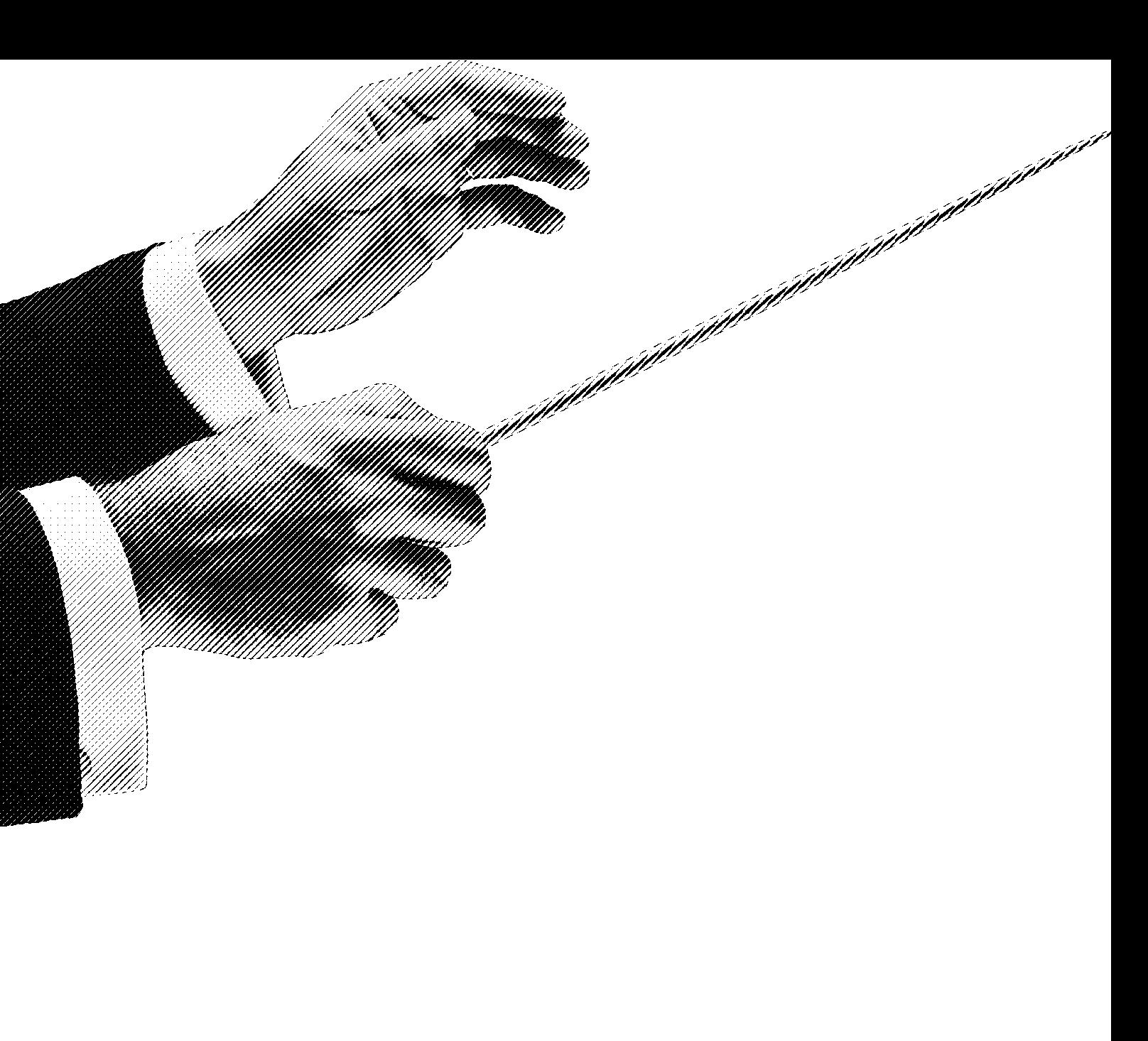
The Lubbock Symphony Orchestra appreciates the generosity of the following individuals who have given to the Annual Fund between March 2024 and March 2025.
($50,000+)
Sandra and Neil Kurtzman
($25,000-$49,999)
Herb and Evan Armstrong
Dr. Doug Klepper and Terry Hawkins
Ann and Craig* McDonald
Jana and Sam Scheef
($15,000-$24,999)
Deena and Harold Evensky
Nancy and Thomas Neal
Susan and Don Maddox
The Honorable and Mrs. Phil Johnson
($7,500 – $14,999)
Leen and Mounir Borno
Maureen Chadwick
Covar Dabezies
Michael Epps
Stephen L. and Melissa A. Faulk
Birgit and Brad Green
Patricia and Donnie Hicks
Betsy and Thivakorn Kasemsri
Dawn Kelley and Marcus Borhani
Jo Anne M Smith
Jill and Fred Stangl
Toni E. Wallingford
Ralph Tamper and Don Shrum
Drs. Lola and Thomas Windisch
($5,000 – $7,499)
David Cho
Terry Greenberg
Leslie and Adrian Huckabee
Rebecca and Kwang Kim
Sharon and Rick Martin
Tricia and Dr. Peter Reed
Katie and John Salter
Maestro’s Circle, continued
Shanna and James St. Clair
Lyn and Mark Stoll
Jenny and Edson Way
($3,500 – $4,999)
Evelyn Davies
Brenda and Curtis Parrish
Drs. Roger and Nadene Tipton
Mary Jane and Tim Sampson
($1,500 – $3,499)
Elizabeth and Will Ashmore
Barb and Nathan Baie
Cathy and Ray Box
Terri and Michael Byrne
Beth and Chris Carpenter
Deborah Conn
Linda and Bryan Dunn
Martha Fregia
Patricia Lynn Freier
Erin and Elgin Gregg
Sandy and Alan Henry
John Hunter
Virginia Kellogg
Stacey and Robert Kollman
Amanda Kuhn
Jan Ledbetter
Grace and Robert Lin
Paula and Kurt Loveless
Tina and Tommy Sansom
Dr. Charles and Patricia Wheeler
Darya White
Cindy and Harry Zimmerman
($1,000 – $1,499)
Pam and Rob Allison
Joan Baker
Maria and Stephen Balch
Judith Baldwin
Dustin Baucom
Amanda Bourland
Kasi and Chris Boutwell
Mary Ann Bridges
Ruth and Aubrey Bridges
Mr. Anthony and Dr. Helen Brittin


Family Owned Since 1931
Bobbe Crawford
Amy and Jason Grisham
Elizabeth Haley
Robbie Harbison
LaVelle and Tommy Hawkins
Bobbye Hrncirik
Jennifer and Patrick Hughes
Richard Jorgensen
Roger Karr
Larry and Lucy Landusky
Patti and James Lupton
Mallory Miller*
Thomas J. Nichols
Judith E. O’Brien
Sharmon and Keith Owens
Janeen Patterson
Cathy and Dr. Scott Porter
Melissa and Tim Pridmore
Dr. Wael and Hana Qubti
Kelly Robinson
Judy and Paul Rostad
Judith Rowdon
Mary and Roger Saathoff
Carrie and Kevin Sedberry
Debbie Sims
Sally Walton
Joyce and Scott White
Ruth Wilkerson
Brian A. Willcutt
($500 - $999)
Gisele Bazan
Beverly and Dana Butler
Reyhan and Richard Crider
Cari and Dennis Dillon
Patrick Dunne
Matthew and Lisa Garner Santa
Nicole George
Stephen Glenn
Ellen and Dennis Harp
Glenda and George Helfrich
Jane Henry
Courtney and Doug Jordan
Janice and Morris Knox
Fran Koch
Lucy Lanotte
Kit and Ben Linton
Barry McCool
Sally Murray
Norman Orr
Penelope and Gerald Pipkin
Kathrin Lee Price
Melanie and Mike Ragain
Dona Richardson
Janice and Lowry Schaub
Tracee and Scott Spore
Janice Stachowiak
Kristian Tsokanov
Dianne White
John and Mary Zias
($275 - $499)
Eric and Janis Blackwell
Karl and Robin Dent
Heather and Mark Hocker
David Hodges
Janeen Drew Holmes
Wendell Leatherwood
Jill Nelson
Gwen and Thomas Nichols
Janet and Davis Price
Carol K Walker
Kathleen Weed
Gay Word
($125 - $274)
Jill and Randy Ball
H. Allen Anderson
Shelley and Ian Barba
David Box
Jamila and Samuel Branch
Kathleen and Eric Burrell
Kim Burrows
Neill Carter
Chris Castleberry
Mary Cato
William Choe
Chris and Kathy Claus
Christopher Collins
Amy and Josh Corbin
Alex Driggars
Dorothy Glenn
Alena Ilyushyna
Judy and Gary Linker
Beverly and Don McBeath
Cindy and Mark McBrayer
Joe McFerrin
James McNabb
Kishor Mehta
Leslie Mihal
Sue Mooney
Thinh Nguyen
Dona Nussbaum
Justin Price
Suzanne Rasco

Carlos Ricaldi
Carol Robertson
Sylvia Sapsky
Karen Savage
Joe Sharp
Sherril and Charles Skibell
Steve Synck
Jim Tapp
Jack Thompson
Paul Thornton
Alice V White
Susan Wilson Sustainer’s Circle,
Anonymous Donor
Grey Hare Analytics, Inc.
MTS Kimbell
The CH Foundation
Civic Lubbock
Double T SmilesDrs. Nadene and Roger Tipton
ESO Fan Wear
Helen Jones Foundation Western Bank


*Lubbock Youth Orchestras and Lubbock Symphony Education Sponsors
($25,000+)
City Bank
The United Family
($15,000-$24,999)
Covenant Health Systems
FirstBank & Trust
($7,500 – $14,999)
Armstrong MechanicalBeth and Chris Carpenter
*Double T Smiles -
Drs. Nadene and Roger Tipton
Hill & Ioppolo Oral & Dental Implant
Surgery of LubbockLory and Dr. Robert Ioppolo
MWM Architects
Overton Hotel & Conference Center
($5,000 – $7,499)
Chappell, Lanehart & Stangl P.C.
Friends of Trout Fishing in America
Tiva Kasemsri
Lowry Schaub
Scott Spore
Roger Tipton
Thomas Windisch
John Zias
*Western Bank
Visual Edge IT
($3,500 – $4,999)
Grey Hare Analytics, Inc.
MTS Kimbell
($1,500 – $3,499)
Alan Henry InsuranceRyan Henry and Alan Henry
Blue Layer
Chicken ExpressStacey and Robert Kollman
Evensky & Katz/Foldes Wealth Management - Katie and John Salter
GRACO Real Estate Development, Inc.The Randy Andrews Family Office Wise Commercial Interiors
Prosperity Bank
Tricia and Dr. Peter Reed
Tucker Floral
($1,000 – $1,499)
Cathy and Dr. Scott Porter

Our Crescendo fund aims to AMPLIFY Lubbock’s performing arts culture by raising $500,000 to bring popular musical artists to perform alongside the Lubbock Symphony Orchestra.
$0
$500k Help us reach our goal of $500,000!

THANK YOU TO OUR CRESCENDO DONORS!
($10,000+)
$107,000 raised so far Help us bring the next big artist to Lubbock! Mezzo Forte, continued
Evan and Herb Armstrong
Nancy and Thomas Neal
Ralph Tamper and Don Shrum
($5,000 - $9,999)
Michael Epps
Don and Susan Maddox
Sharon and Rick Martin
Shanna and James St. Clair
Toni Wallingford
($1,000 - $4,999)
Pam and Rob Allison
Beth and Will Ashmore
Ruth Ann and Aubrey Bridges
Bobbe Crawford
Covar Dabezies
Stephen L. and Melissa A. Faulk
Patricia Lynn Freier
Birgit and Brad Green
Robbie Harbison
Sandy and Alan Henry
The Honorable and Mrs. Phil Johnson
Richard Jorgensen
Betsy and Thivakorn Kasemsri
Stacey and Robert Kollman
Grace and Robert Lin
Gwen and Tom Nichols
Sharmon and Keith Owens
Brenda and Curtis Parrish
Prosperity Bank
Dr. Wael and Hana Qubti
Tricia and Peter Reed
Judy and Paul Rostad
Mary and Roger Saathoff
Mary Jane and Tim Sampson



Mezzo Forte, continued
Tina and Tommy Sansom
Debbie Sims
Jill and Fred Stangl
Pat and Charles Wheeler
Darya White
($20 - $999)
Trudy Gamble
Carol Giblin
Alena Ilyushyna
Amanda Kuhn
Kit and Ben Linton
James McNabb
Jill Nelson
Mary Parra
Kathrin Price
Cloyce Stetson and Janice Stachowiak
Ross Waggoner
Susan Wilson
For over 78 seasons, the Lubbock Symphony Orchestra has been a bridge between the world’s top performers and the heart of the Hub City. Whether it’s up-and-coming talent or seasoned professionals, we take pride in showcasing the rich musical culture of our region to the world. Now, it’s time to turn up the volume and make it clear that Lubbock is a destination not to be missed.
The meaning of CRESCENDO is a gradual increase. In 1963, the Lubbock Symphony introduced the legendary pianist Van Cliburn, who performed with our local orchestra. Similarly in 1993, the Lubbock Symphony garnered attention by hosting a series of concerts featuring pop singer Tony Bennett. Since then, the orchestra has had the privilege of hosting notable performers such as Yo-Yo Ma, Joshua Bell, Wynton Marsalis, Susan Graham, Renée Fleming, Boyz II Men, and Kristin Chenoweth. The Symphony has also paid tribute to renowned artists like Queen, The Beatles, Led Zeppelin, Wicked The Musical, and Aretha Franklin. These performances hold a special place in the hearts of many members of our community, as they are cherished memories. This is why we strive to keep creating unforgettable experiences that can be treasured by future generations.
Did you know that only one-third of our annual budget comes from ticket sales? The remaining funds mainly come from music supporters in the community, like yourself. Crescendo aims to AMPLIFY your support of our evolving mission to bring the most prominent names in music to the Hub City.
You can add your name today to the expanding list of benefactors, who are leaving their mark on the Hub City and building a legacy of performances for generations to come.
Please join us with your gift to Crescendo today!
The Lubbock Symphony Orchestra respectfully acknowledges donations received during the 2024-2025 Season in honor of the following:
Bess Haley In Honor Of Toni Wallingford
Evelyn Davies In Honor Of Toni Wallingford
The Randy Andrews Family In Honor Of David Cho
William Choe In Honor Of David Cho
Sue Sexton In Honor Of David Cho
Virginia Kellogg In Honor Of David Cho
Dean Kilmer In Honor Of David Cho
Rock Thoms In Honor Of David Cho
David J. Tobin In Honor Of David Cho
G3 In Honor of Stephen L. and Melissa A. Faulk
Michael Epps In Honor Of Stephen L. and Melissa A. Faulk
Robin and Don Walker In Honor Of Stephen L. and Melissa A. Faulk
Toni E. Wallingford In Honor Of Stephen L. and Melissa A. Faulk
Patricia and Charles Wheeler In Honor Of Stephen L. and Melissa A. Faulk
Twentieth Century Club In Honor Of Dr. Elissa Stroman
Jim Smith In Honor Of Donna Smith
In honor of Dawn Kelley & Marcus Borhani Musicians Support Endowment
James and Luann Beardemphl
Scott and Jessica Beardemphl
Crystal Borhani
Rahim and Martha Borhani
Tutti Burkett
David Cho
Bryan and Linda Dunn
Richard and Rebecca Gale
Larry and Susan Hess
Sheryl House
George R. Keeling Insurance
Doug Klepper and Terry Hawkins
Leslie Mihal
Allan Mackenzie and Carolyn Moore
Steve and Peggy Reinhart
Susan and Chris Seiter
Tom and Judy Spoonts
Priscilla Stennis
Cloyce Stetson and Janice Stachowiak
Lloyd and Betti Whetzel
Patricia and Charles Wheeler
Jo Anne M. Smith In Memory Of Norton Baker
Michael Epps In Memory Of Eva and Walter Beets
Thivakorn Kasemsri In Memory Of RADM Stephen K. Chadwick
Toni E. Wallingford In Memory Of Dickie and Fritz Epps
Martha Fregia In Memory Of Justin Fregia
Connie Goodwin In Memory Of Grace and Frank Goodwin
Allan MacKenzie In Memory Of Ruth Lauer
Peggy Dyess In Memory Of Audrey McCool
Carolyn Wooten In Memory Of Ricky Rasco
Suzanne Rasco In Memory Of Ricky Rasco
Jim Smith In Memory Of Donna Smith
Eric and Janis Blackwell In Memory of Dr. Roy Wilson
If you would like to honor an individual or organization important to you, please send your tax-deductible donation to the Lubbock Symphony Orchestra, 601 Avenue K; Lubbock, TX 79401.
The Lubbock Symphony Orchestra Endowment Trust
The CH Foundation Conductor’s Podium Endowment
Helen DeVitt Jones Endowment for Education
LSO Endowment for Musician Fees and Education
Shelley Hall Nelson Endowment for Musicians’ Salaries
Lubbock Symphony Opera Fund
Texas Tech University J.T. & Margaret Talkington College of Visual and Performing Arts, School of Music Performer Endowment
Jones-Saathoff Family Concertmaster Endowment
Diekemper Family Foundation Associate Concertmaster Endowment
Justice Phil and Carla Johnson Principal Second Violin Endowment
Mary M. Epps and Ralph E. Wallingford Principal Viola Endowment
Mary Francis Carter Principal Cello Endowment
Eugene and Covar Dabezies Principal Bass Endowment
Drs. Audrey and Barry McCool Principal Flute Endowment, in memory of the Crew of Columbia, STS-107
Lubbock Symphony Guild Principal Oboe Endowment
Janeen Drew Holmes English Horn Endowment
Christine Polvado and John Stockdale Principal Clarinet Endowment
Nancy and Tom Neal Principal Bassoon Endowment
Anthony and Helen Brittin Principal Horn Endowment
Stacey and Robert Kollman Family Principal Trumpet Endowment
Larry and Lucy Landusky Principal Trombone Endowment
Tim and Mary Jane Sampson Bass Trombone Endowment
Diekemper Family Foundation Principal Tuba Endowment
Lubbock Symphony Guild Timpani Endowment
Lisa Rogers/Alan Shinn Principal Percussion Endowment
Rachel Jean Armstrong Thomas Principal Harp Endowment
Edward R. and Jo Anne M. Smith Principal Piano Endowment
Dawn Kelley and Marcus Borhani Musicians Support Endowment
— Matshona Dhliwayo
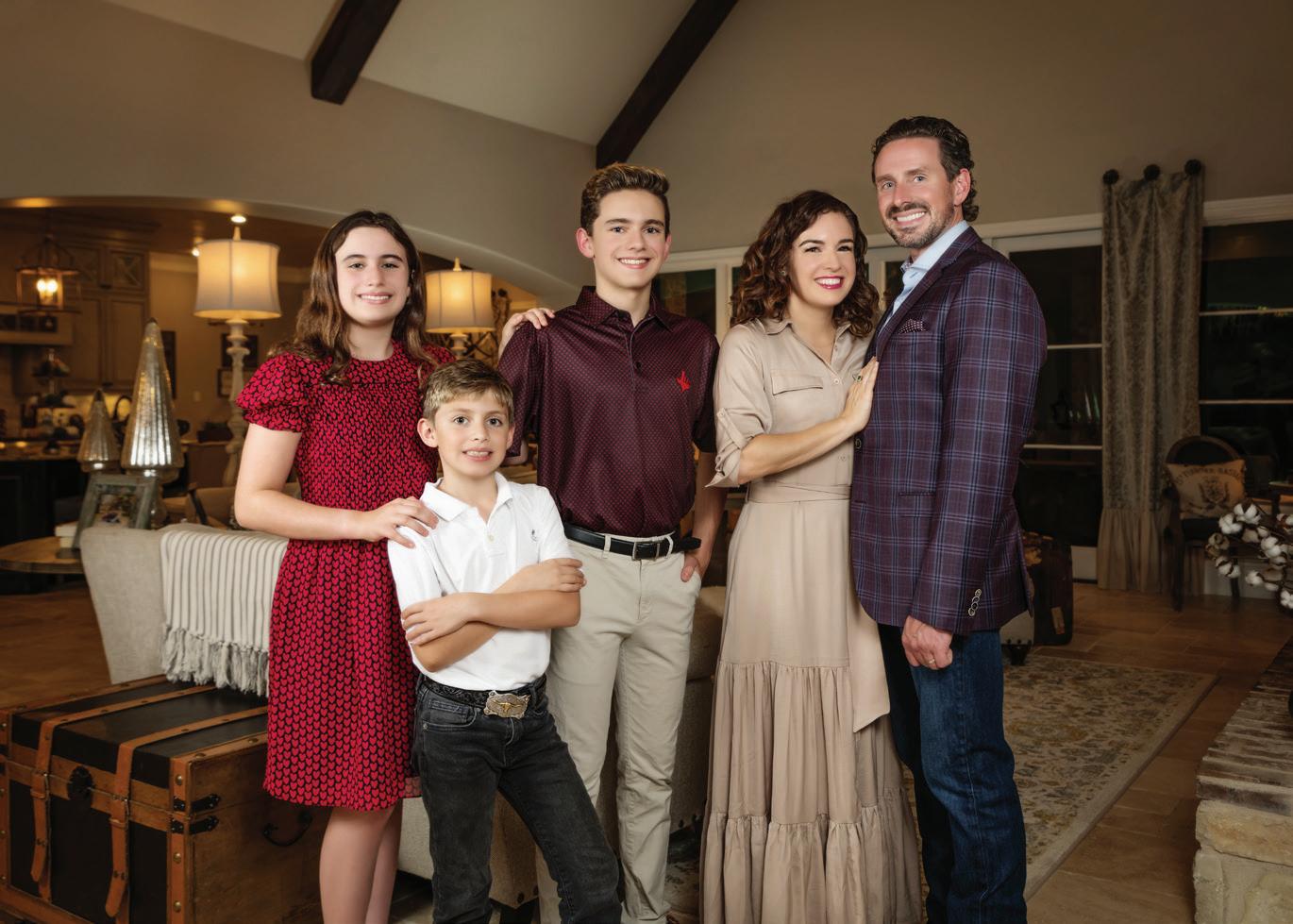

Your support enables the LSO to offer grand musical experiences, whether in concert with world-renowned guest artists or in classrooms sharing the wonder of music with students.
Below is a list of ways you can support your LSO:
Traditional Donation
Mail a check, payable to the Lubbock Symphony Orchestra, or make an online gift. See the QR Code below to make a gift.
Many businesses will match employees’ charitable gifts. A donation may be matched dollar-for-dollar or at a percentage. Check with your company to see if they participate in a matching program.
Beginning at age 70½, you may contribute up to $100,000 annually directly from your IRA to the LSO through a QCD and avoid the distribution as income.
You may contribute to the LSO through a donor-advised fund. The LSO can also be the beneficiary or successor advisor to your DAF.
You can donate appreciated stocks and securities to the LSO, saving capital gains taxes while providing a deduction of the entire donation.
Remembering the LSO in wills and trusts helps ensure we continue creating quality symphonic performances and educational experiences.
*To ensure your gift meets proper tax requirements and to determine the best method of gifting for your unique situation, we recommend reviewing guidelines and discussing with your tax and/or financial advisor and legal professional for bequests and legacy gifts.
For additional information or questions, contact Courtney Jordan, Director of Development, at 806.642.5228 or courtney@lubbocksymphony.org
Lubbock Symphony Orchestra
601 Avenue K | Lubbock, TX 79401
EIN #75-6001993
The LSO is a 501c(3) nonprofit organization.





Jack M. Lewis
W.P. Clement
Charles E. Maedgen, Jr.
Roy Bass
Rex Webster
Marion Key
W.R. Sewell
J.C. Reynold
James L. Quicksall, Jr.
Asher Thompson
Richard G. Richards
Jack Kastman
Joe J. Moise
J. Harmon Jenkins
George C. Miller
Lonnie Langston
John Witcomb
O.W. English
Asher Thompson
Troy Myers
Arthur E. Gamble
Charley Pope
C.B. Carter
Robert E. Norris
Dean James Allen
Robert L. Stripling
Charley Pope
John R. Kreiger
Roger Key
Edwin E. Merriman
Owen McWhorter, Jr.
Frank Newton
Frank Anderson
Kay Sanford
Paul Meyer
Robert L. Stripling
Jim Ratliff
Coffee Conner
Alan Henry
William D. Armstrong
Susan Boling
Curtis Griffith
DeWayne Pierce
Mike Cunningham
Margaret Lutherer
Chris Barnette
Catherine S. Porter
Ray Fargason
Emily Ratcliff
Brad Green
Peter G. Daia
Kirk McLaughlin
Harry Zimmerman
Shannon Taliaferro
Heather Hocker
Brian Willcutt

The Lubbock Symphony Orchestra would like to express gratitude to and






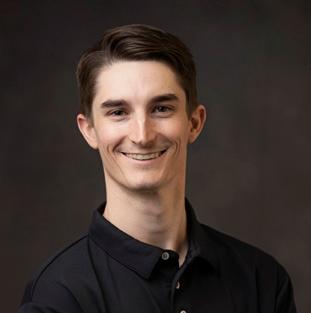

Toni Wallingford Chair
Jill Stangl Chair Elect
Melissa A. Faulk Treasurer
Terri Byrne Secretary
Brian Willcutt
Immediate Past Chair
Beth Ashmore
Steve Balch
Dustin Baucom
Gilbert Berdine
Leen Borno
Kasi Boutwell
Maureen Chadwick
David Cho
Covar Dabezies
Michael Epps
Stephen L. Faulk
Patricia Lynn Freier
Brad Green
Amy Grisham
Spencer Hartman
Sandy Henry
Bobbye Hrncirik
Leslie Huckabee
Carla Johnson
Tiva Kasemsri
Amanda Kuhn
Neil Kurtzman
Grace Lin
Paula Loveless
Brenda Parrish
Melissa Pridmore
Peter Reed
Carol Robertson
Stephanie Rogers
Katie Salter
Tim Sampson
Andrew Stetson
Nadene Tipton
Edson Way
Darya White
Joyce White
Lola Windisch
Galen Wixson
Galen Wixson
President & CEO
David Cho
Music Director
Eric Allen
Lubbock Chamber Orchestra
Artistic Director
Suzanne Rasco Director of Accounting
Courtney Jordan
Director of Development
Kea Beasley Director of Education
Molly Ramirez
Director of Marketing and Communications
Amelia Jamieson
Graphic Designer
Nia’ Threatt
Patron Services Coordinator
Gary Hudson
Personnel Manager
Corey Dolter
Operations Manager
Israel Mello
Librarian
Callie Watson
Marketing and Communications Assistant

Welcome Patrons,
Thank you for attending tonight’s performance! We appreciate your support of the Lubbock Symphony Orchestra. The 2024-2025 season promises to be an outstanding year of symphonic performances. We are excited to experience the joy of music with you.
Tonight’s performance, and every performance since 1952, has been made possible in part by the Lubbock Symphony Guild. For 72 years, the Guild members have donated their time, talent and resources to keep symphonic music thriving in West Texas.
I hope that you enjoy the incredible talent of our remarkable Orchestra and value the educational and cultural contributions they provide to our community. I invite you to consider becoming a member of the Lubbock Symphony Guild, to join us in further supporting the efforts of the LSO. For more information, please visit our website at www.lubbocksymphonyguild.com.


Front Row Left to Right - Anastyn Greaser, Mia Chacon, Bryleigh Norman, Hannah Pharies, Ella Mendez, Emily Roark, Rylan Bryant, London Carlisle, lndie Williams, Ella Bennett, Viviana Ziegner, Olivia Mudd
2nd Row Left to Right - Lauren Casey, Anne Edwards, Susannah Smith, Ella Murphree, Sadie Callison, Camden McDougal, Maya AI-Hmoud, Lydia Pesterfield, Reece Watson, Raegan Reed, Jayci Lentz, Olivia Elliott, Tierni Green ,Aubrey White, Teema Sharif
3rd Row Left to Right - Riley Newberry, Zimri Buckley, Kamryn Chandler, Jencee Thompson, Elizabeth Johnson, Blair Belew, Emory McCain, Gabrielle Scherpereel, Morgan Parker, Sydney Smothers, Remington King, Rylee Bea Rose, Cora Clifford
Back Row Left to Right - Reece Riddle, Addison Kitten, Maya Malouf Vermillion, Raegan Lee, Bella Lampe, Hannah Harvey, Emily White, Madelyn Caswell, Ashlee Jones, Brentley Preston, Camryn Howe, Kristen Mitchell
Not Pictured - Catherine Ancell, Grace Gerwig, Taylor Harrison, Ashlyn Simek




Front Row Left to Right - Halley Reynolds, Elizabeth Nicholson, Ava Smith, Finnley Forero, Landry Allen, Joy Wischmeyer, Ellie Underwood, Katelyn Bollens, Madison Heider, Elly Norris, Campbell Beeler
2nd Row Left to Right - Chayce Johnson, EllaMaria Webb, Ashlyn Edwards, Kennedy Cowan, Emyrson Parrott, Blakeley Martin, Chayce Welborn, Payton Reed, Alice Everett, McKanna Garcia, Lauren King, Sadie Gillespie, Addison Neufeld
3rd Row Left to Right - Katelyn Glenn, London Bird, Meridith Bradley, Cassidy McKinnon, Natalie Sweat, Emery Fox, Campbell Franklin, Baylee Fillingim, Joleigh Reno, Danelle Mccourt
Back Row Left to Right - Emma Lane, Erin Brodbeck, Kathleen St. Clair, Harper Burrell, Georgia Kitten, Talitha Dalton, Addison Stewart, Adelaide Underwood, Angelia Liu
Not Pictured - Reya Felton, Heidi Helderlein, Sofia Martinez, Sarah Simpson, Brynlee Smith
LSG Board Meeting, Lubbock Women’s Club
Thursday, September 5, 2024
Senior Deb Meeting, Lubbock Women’s Club
Sunday, September 29, 2024
LSG Board Meeting, Lubbock Women’s Club
Thursday, October 3, 2024
LSG Board Meeting, Lubbock Women’s Club
Thursday, November 7, 2024
LSG Membership Meeting and Holiday Social
Thursday, December 5, 2024
LSG Board Meeting, Lubbock Women’s Club
Thursday, January 2, 2025
Debutante Presentation Tea, Lubbock Country Club
Sunday, January 26, 2025

Front Row Left to Right - Elizabeth Williams, Sage Boyle, Marlee Thompson, Kate Harlien, Abbott Spitzer, Lula Biondi, Ellison Roberts, Campbell Wilson, Elizabeth Thane, Hannah Owen, Sophie Scolaro
2nd Row Left to Right - Presley Taylor, Kaylee Jordan, Riverson Sawyer, Kristine Wischmeyer, Carter Piland, Emersyn Cross, Kayci Cave, Kayleigh Lewis, Shelby Rivas
3rd Row Left to Right - Finley Cross, Sophie Carter, Rynn Riddle, Sarah Poe, Aubry Elrod, Alexis Gregory, Kaylee McKee, Lauren Brashear, Isabella Hernandez
Back Row Left to Right - Lola Latham, Hadley Payne, Ashlyn Neufeld, Addison Evans, Pamela Buckley, Hope Stonestreet, Kaelie Fincher
Not Pictured - Emily Aldinger, Elle Condra, Anzley Proffitt
Debutante Presentation and Winter Ball, Lubbock Memorial Civic Center
Saturday, February 1, 2025
LSG Board Meeting, Lubbock Women’s Club
Thursday, March 6, 2025
LSG Board Meeting, Lubbock Women’s Club
Thursday, April 3, 2025
LSG Membership Meeting and Annual Brunch
Thursday, May 1, 2025


